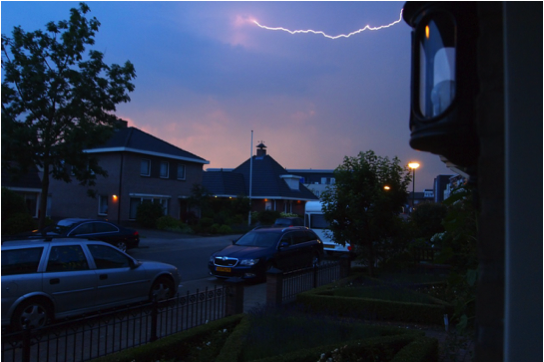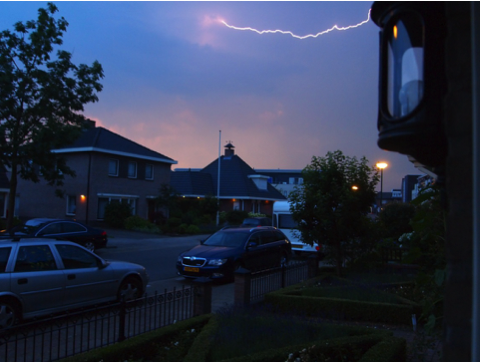 Lightning protection systems help shield the workforce from danger, assist in the protection of equipment from damage and safeguard investments from downtime. While there is no known method of preventing lightning strikes, a lightning protection system lessens the hazards associated with these risks.
Lightning protection systems help shield the workforce from danger, assist in the protection of equipment from damage and safeguard investments from downtime. While there is no known method of preventing lightning strikes, a lightning protection system lessens the hazards associated with these risks.
As architectural methods, equipment and technology continue to evolve at rapid rates, lightning strikes present a constant risk. That’s why it’s more imperative than ever to rely on holistic, advanced lightning protection systems that take into account modern building features.
The Evolution of Lightning Protection Systems
When it comes to an effective lightning protection system, an air terminal serves as the receptor or contact point of a lightning strike. The most common form of air terminal placement is determined by the Rolling Sphere Method (RSM), which is based on the simple Electro Geometric Model (EGM). While the lightning protection field has relied on the EGM for years, it does not account for the following:
- The physical basis of the upward leader inception process
- The importance of the structure height
- The geometry of objects on the structure
That’s why Dr. A.J. Erikson developed the Collection Volume Method (CVM) in the late 1980s. The CVM considers the physical criteria for air breakdown for optimum air terminal placement and lightning protection.
While every building may not require the needs of a CVM-based lightning protection system, certain situations warrant this effective method. Continue reading to learn three scenarios that require the advance CVM-based lightning protection system.
1. Complex Architecture
From commercial buildings to manufacturing facilities to government buildings, it’s evident that architecture has changed over time. And while homes and facilities continue to evolve, lightning protection systems must keep pace to defend against lightning destruction.
The design of a standard lightning protection system must:
- Intercept lightning flash at a preferred point of strike
- Conduct the lightning current to earth
- Dissipate current into the earth
- Create an equipotential bond to minimize hazardous potential differences
However, these standard practices do not account for complex architecture. Luckily, the CVM-based lightning protection takes into account the unique size and shapes of modern buildings to safeguard these structures.
2. Unique Building Structure
As material and design preferences evolve, more buildings are created with unique features, including structure height and width and construction materials.
As notable features in buildings continue to expand, so does the need for advanced lightning protection systems. For example, facilities with unique facades, pillar or column structure or window placement present challenges for conventional lightning protection systems, similar to the issues posed by sports facilities and stadiums with wide, open areas.
The design process for lightning protection systems is multi-faceted, and includes risk assessment and selection of materials, air termination system, downconductor system, earth-termination system and more. When conventional methods are deemed impractical for conventional methods, consider CVM-based lightning protection systems. A CVM-based lightning protection system allows for unique downconductor placement, which reduces the risk of side flash and induced voltages within the building.
3. Unspecified Installation Method
The random nature of lightning means that protection systems must always be prepared for an unexpected strike. It can spark a fire, cause major failures to electrical, telephone and computer services, and cause substantial revenue loss through downtime.
Lightning protection systems are highly encouraged in the following facilities, which are particularly at risk:
- Power stations
- Drilling rigs
- Hazardous locations or storage areas
- Television, radio and telecommunication stations
- High-rise buildings like apartment complex
- Historic structures
- Many more
If no protection method is specified, engineers and architects may want to opt for a CVM-based system. A CVM-based system, like the ERICO SYSTEM 3000, includes the following elements:
- ERICO DYNASPHERE air terminal
- ERICO ERICORE downconductor
- Lightning event counter
- Purpose designed low impedance grounding system
This advanced system achieves reliable lightning capture and control, and serves as a viable alternative to conventional methods.
To learn more about CVM-based lightning protection or the ERICO SYSTEM 3000, download our latest whitepaper, Interception Efficiency of CVM-based Lightning Protection Systems.
Image credit: Pixabay, CC0 Public Domain

